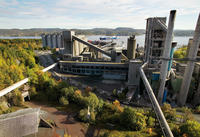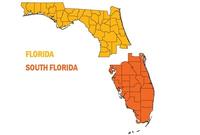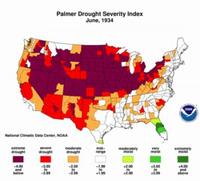-
Energy engineers call for new, less restrictive regulatory framework for fracking
Leading energy engineers are suggesting that U.K. regulations on the surface vibrations caused by shale gas fracking are unnecessarily restrictive. The engineers state in a new paper that widely applying restrictions similar to those currently in force on fracking would require a ban on heavy vehicles from passing houses or walking on wooden floors. They also state that the threat of serious earthquakes caused by fracking activity is considerably lower than commonly feared.
-
-
New technology reduces cost to capture carbon

The U.S. Department of Energy’s Savannah River National Laboratory (SRNL) has signed an Exclusive Rights Agreement with Partnering in Innovation, Inc. of Orlando, Florida, in support of new carbon capture technology. Originally developed at SRNL, this approach will help open global markets for cost-effective industrial carbon dioxide (CO2) capture and re-use.
-
-
Sea level rise threatens California coastal infrastructure
Officials in Humboldt County, California are preparing for sea level rise, which experts say could threaten utilities and U.S. highway 101. The National Research Councilwarns that California, Oregon, and Washington could experience twelve inches of sea level rise by 2050 and thirty-six inches by 2100. Sea level on Humboldt Bay has increased by eighteen inches over the past century due to increasing tide elevation and subsidence. Gas, electrical, and water transmission lines are all buried in the farmlands behind dikes that fortify the shoreline.
-
-
As drought continues, more Californians turn to greywater
California’s rainy season tends to run from October to late March, but for the third year in a row rain has been relatively absent, meaning that the state is currently suffering from a severe, unprecedented drought. With increasing water rates, a growing number of homeowners in Southern California are relying on greywater systems to support their landscapes and toilet flushing. “If the drought continues, honestly, I could see all new construction will have greywater systems of some kind because it really doesn’t make sense to put usable water in the sewer system,” says one expert.
-
-
NASA facilities across U.S. vulnerable to climate change
The National Aeronautics and Space Administration (NASA) has been at the forefront of climate science, launching satellites that take the pulse of Earth’s land, oceans, and atmospheric systems, gathering data on climate, weather, and natural hazards. The agency, however, is itself increasingly vulnerable to the effects of a changing climate. Hurricane Isabel partially flooded the Langley Research Center in Virginia in 2003; Hurricane Frances damaged the Kennedy Space Center in Florida in 2004; and Hurricane Katrina damaged buildings at the Stennis Space Center in Mississippi in 2005, among recent incidents. Other facilities have been damaged or threatened by tornadoes and wildfires.
-
-
Harnessing artificial intelligence to search for new Ebola treatments
The University of Toronto, Chematria, and IBM are combining forces in a quest to find new treatments for the Ebola virus. Using a virtual research technology invented by Chematria, a startup housed at U of T’s Impact Center, the team will use software that learns and thinks like a human chemist to search for new medicines. Running on Canada’s most powerful supercomputer, the effort will simulate and analyze the effectiveness of millions of hypothetical drugs in just a matter of weeks.
-
-
Hungarian red mud spill did little long-term damage

The aftereffects of the 2010 red mud spill that threatened to poison great swathes of the Hungarian countryside have turned out to be far less harmful than scientists originally feared. The disaster happened when weeks of heavy rain caused a dam to collapse at a containment facility in Ajka in Western Hungary. It released around a million cubic meters of toxic sludge into the Torna-Marcal river system, onto the Hungarian plain and ultimately into the Danube. The mud, a byproduct of refining aluminum from bauxite ore, was dangerously alkaline, extremely salty and contained potentially toxic metals like chromium and vanadium.
-
-
Coastal towns build resilience to prepare for future storms
Sea Bright, New Jersey is one of several communities affected by Superstorm Sandy which is actively building resiliency against the next major storm. The town, set on a narrow strip of sand between the Atlantic Ocean and the Shrewsbury River, frequently floods, and during Sandy, its entire downtown business district was damaged, as were 75 percent of the town’s homes.
-
-
States invest in resilience in the face of mounting extreme-weather challenges
Months after Superstorm Sandy devastated the New York coast line, Governor Andrew Cuomo’s Office of Storm Recovery launched a $17 billion strategy to transform the state’s infrastructure. Project Reimagining New York for a New Reality sought to make the state’s transportation networks, energy supply, coastal protection efforts, weather warning systems, and emergency management more resilient. The strategy is just one example of a trend in investments toward resilience efforts post Hurricane Katrina, Irene, Lee, and Sandy.
-
-
Resting place of 2 million barrels of oil missing from Deepwater Horizon accident found
Where is the remaining oil from the 2010 Deepwater Horizon disaster in the Gulf of Mexico? The location of two million barrels of oil thought to be trapped in the deep ocean has remained a mystery. Until now. Scientists have discovered the path the oil and followed it to its resting place on the Gulf of Mexico sea floor. By analyzing data from more than 3,000 samples collected at 534 locations over twelve expeditions, the researchers identified a 1,250-square-mile patch of the sea floor on which four to 31 percent of the oil trapped in the deep ocean was deposited. This is the equivalent of 2 to 16 percent of the total oil discharged during the accident.
-
-
Building a network of canals to save Boston from sea level rise
By the end of the century, sea-level rise on the U.S. east coast is predicted to reach six feet, so city planners in Boston recently met to discuss how to live with rising waters along the city’s historic streets. One suggestion is to turn Boston’s Back Bay district into a network of canals. The canals would alleviate sea-level rise by draining water into lower-lying back alleys and some main streets, but the proposed plan would have to contend with freezing temperatures in the winter.
-
-
South Florida wants to secede from Florida over sea level rise

When people talk of “secession” in the United States they typically have Texas, Vermont, or the former Confederate states in mind, and the reasons for driving secession typically have to do with politics or money. Not anymore. The city of South Miami earlier this month passed a resolution which called for southern Florida to secede from the rest of the state, citing climate change as the reason. There are many differences between north and south Florida: South Florida is largely urban and politically tends to lean left, while the north is mostly rural and much more conservative. If south Florida reminds people of New York, the Florida panhandle resembles Alabama. Then there is this: The northern part of the state is, on average, 120 feet above sea level, but much of the southern section averages only fifteen feet above sea level. South Floridian say that the state government in Tallahassee ignores the perils of sea level rise, which are particularly acute in south Florida, so the time has come to separate from the aloof north.
-
-
Sea level rise or not, coastal development in south Florida is booming
Miami and Miami Beach are both considered ground zero for the challenges posed by climate change, as both cities will experience considerable sea level rise by mid-century. Constant flooding will become the norm as high tides reach shores, posing a threat to property and human life. As discouraging as the future may seem for South Florida, residents, real estate investors, and companies are increasing their investments in the area.
-
-
Study finds 1934 had worst drought of last thousand years

A new study using a reconstruction of North American drought history over the last 1,000 years found that the drought of 1934 was the driest and most widespread of the last millennium. Using a tree-ring-based drought record from the years 1000 to 2005 and modern records, scientists found the 1934 drought was 30 percent more severe than the runner-up drought (in 1580) and extended across 71.6 percent of western North America. For comparison, the average extent of the 2012 drought was 59.7 percent.
-
-
A boom in global natural gas, by itself, will not slow climate change
A new analysis of global energy use, economics, and the climate shows that without new climate policies, expanding the current bounty of inexpensive natural gas alone would not slow the growth of global greenhouse gas emissions worldwide over the long term. Because natural gas emits half the carbon dioxide of coal, many people hoped the recent natural gas boom could help slow climate change — and according to government analyses, natural gas did contribute partially to a decline in U.S. carbon dioxide emissions between 2007 and 2012. In the long run, however, according to this study, a global abundance of inexpensive natural gas would compete with all energy sources — not just higher-emitting coal, but also lower-emitting nuclear and renewable energy technologies such as wind and solar. Inexpensive natural gas would also accelerate economic growth and expand overall energy use.
-
- All
- Regional
- Water
- Biometrics
- Borders/Immig
- Business
- Cybersecurity
- Detection
- Disasters
- Government
- Infrastructure
- International
- Public health
- Public Safety
- Communication interoperabillity
- Emergency services
- Emergency medical services
- Fire
- First response
- IEDs
- Law Enforcement
- Law Enforcement Technology
- Military technology
- Nonlethal weapons
- Nuclear weapons
- Personal protection equipment
- Police
- Notification /alert systems
- Situational awareness
- Weapons systems
- Sci-Tech
- Sector Reports
- Surveillance
- Transportation
Advertising & Marketing: advertise@newswirepubs.com
Editorial: editor@newswirepubs.com
General: info@newswirepubs.com
2010-2011 © News Wire Publications, LLC News Wire Publications, LLC
220 Old Country Road | Suite 200 | Mineola | New York | 11501
Permissions and Policies
Editorial: editor@newswirepubs.com
General: info@newswirepubs.com
2010-2011 © News Wire Publications, LLC News Wire Publications, LLC
220 Old Country Road | Suite 200 | Mineola | New York | 11501
Permissions and Policies
